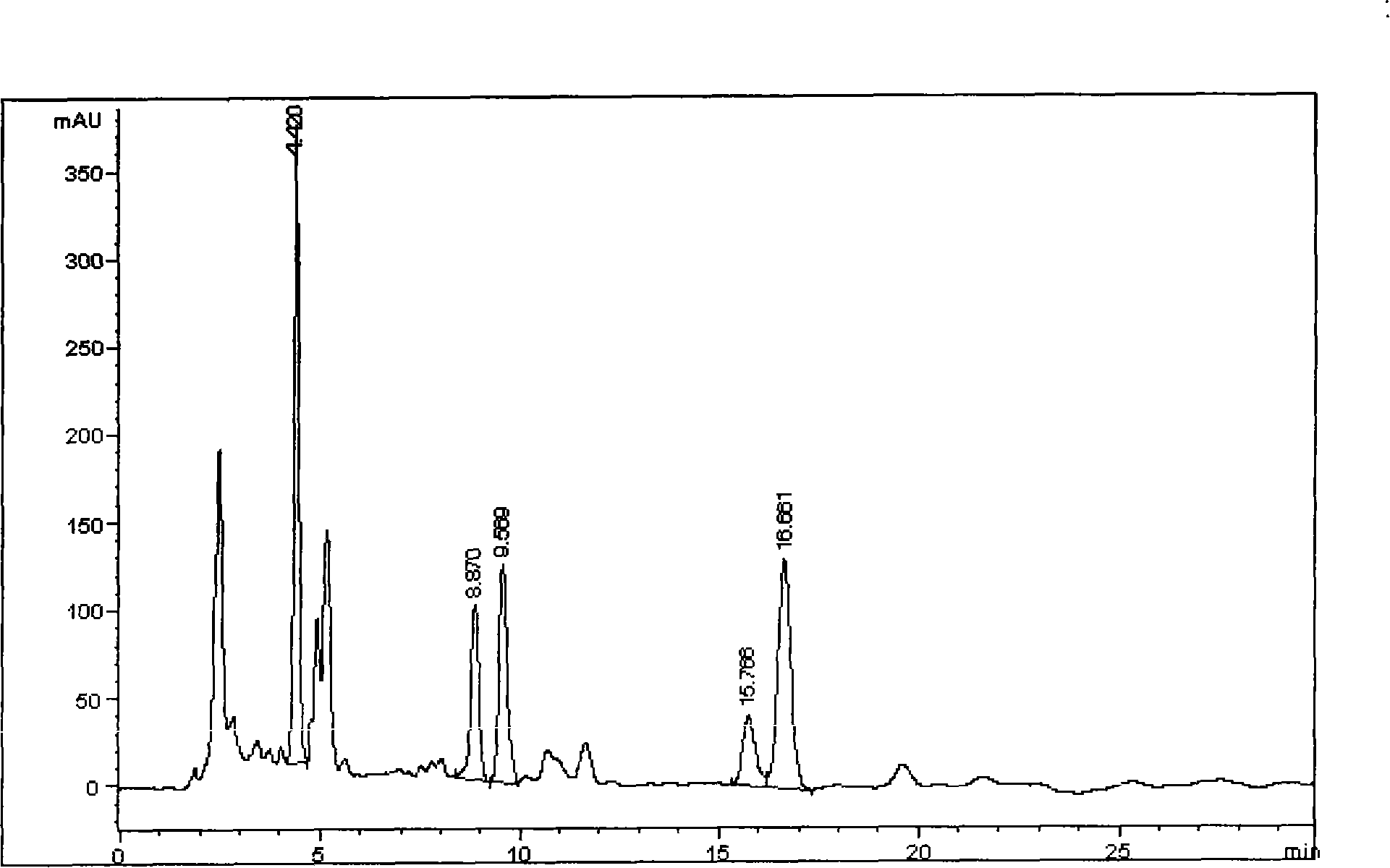Preparing method of loquat leaf total triterpenic acid and antidiabetic use thereof
A technology for total triterpene acids and loquat leaves is applied in the field of extraction and preparation of total triterpenoid acids, and can solve problems such as adverse reactions of western medicines, adverse reactions, lactic acidosis and the like
- Summary
- Abstract
- Description
- Claims
- Application Information
AI Technical Summary
Problems solved by technology
Method used
Image
Examples
Embodiment 1
[0037]Embodiment 1: dry loquat leaf 1.0kg is pulverized into coarse powder, with 80% ethanol 8L successively, 6L cold-soaks twice, each 15 days, merges soaking liquid and merges, concentrates under reduced pressure to the concentrated solution of alcohol degree about 30%, Cool, put in a centrifuge to settle and centrifuge (4000 rpm, 15 minutes) to get 46g of precipitate, add 230ml of 95% ethanol and heat to dissolve, then add 92g of diatomaceous earth to mix the sample, get 92g of diatomite to pack the column, after loading the sample , eluted with 2000ml of 95% ethanol, the eluents were combined, the ethanol was recovered under reduced pressure, and evaporated to dryness to obtain 35g of light yellow powder, which was the total triterpene acid extract of loquat leaves. The total triterpene acid extract of loquat leaves was analyzed by HPLC, and it was 21.7% of pollentinic acid, 10.5% of masilinic acid, 13.6% of corosolic acid, 3.1% of oleanolic acid, and 10.6% of ursolic acid....
Embodiment 2
[0038] Example 2: 1.0 kg of dried loquat leaves were crushed into coarse powder, extracted twice with 80% ethanol 6L and 4L under reflux successively, the combined extracts were concentrated under reduced pressure to a concentrated solution with an alcohol degree of about 20%, cooled, and placed in a centrifuge Sedimentation and centrifugation (rotating speed 2000 rpm, 15 minutes), 41g of precipitate was obtained, 205ml of 95% ethanol was added to heat and dissolve, and 41g of diatomite was added to mix the sample, and 82g of diatomite was loaded into the column. 2000ml eluted, the eluents were combined, the ethanol was recovered under reduced pressure, and evaporated to dryness to obtain 32g of light yellow powder, which was the total triterpene acid extract of loquat leaves. The total triterpene acid extract of loquat leaves was analyzed by HPLC, and it was found that 20.9% of policinic acid, 10.1% of masilinic acid, 14.2% of corosolic acid, 3.0% of oleanolic acid, and 8.9% o...
Embodiment 3
[0039] Example 3: 1.0 kg of dried loquat leaves were crushed into coarse powder, extracted twice with 80% ethanol 6L and 4L under reflux successively, the combined extracts were concentrated under reduced pressure to a concentrated solution with an alcohol degree of about 20%, cooled, and placed in a centrifuge Sedimentation and centrifugation (2000 rpm, 15 minutes) to obtain 43g of precipitate, add 215ml of 95% ethanol and heat to dissolve, add 43g of diatomaceous earth to mix the sample, heat to reflux for decolorization, filter while hot, recover ethanol under reduced pressure, evaporate to dryness, Obtain 34g of light yellow powder, which is the total triterpene acid extract of loquat leaves. The total triterpene acid extract of loquat leaves was analyzed by HPLC, and it was 18.3% of policinic acid, 10.4% of masilinic acid, 14.7% of corosolic acid, 2.6% of oleanolic acid, and 8.9% of ursolic acid.
PUM
 Login to View More
Login to View More Abstract
Description
Claims
Application Information
 Login to View More
Login to View More - R&D
- Intellectual Property
- Life Sciences
- Materials
- Tech Scout
- Unparalleled Data Quality
- Higher Quality Content
- 60% Fewer Hallucinations
Browse by: Latest US Patents, China's latest patents, Technical Efficacy Thesaurus, Application Domain, Technology Topic, Popular Technical Reports.
© 2025 PatSnap. All rights reserved.Legal|Privacy policy|Modern Slavery Act Transparency Statement|Sitemap|About US| Contact US: help@patsnap.com

